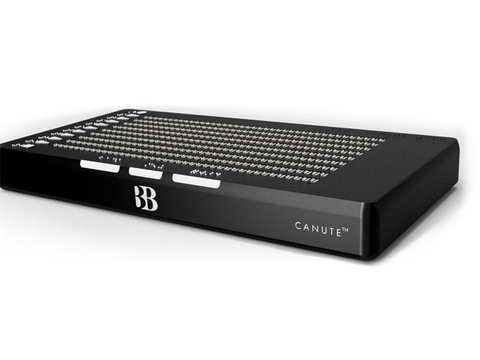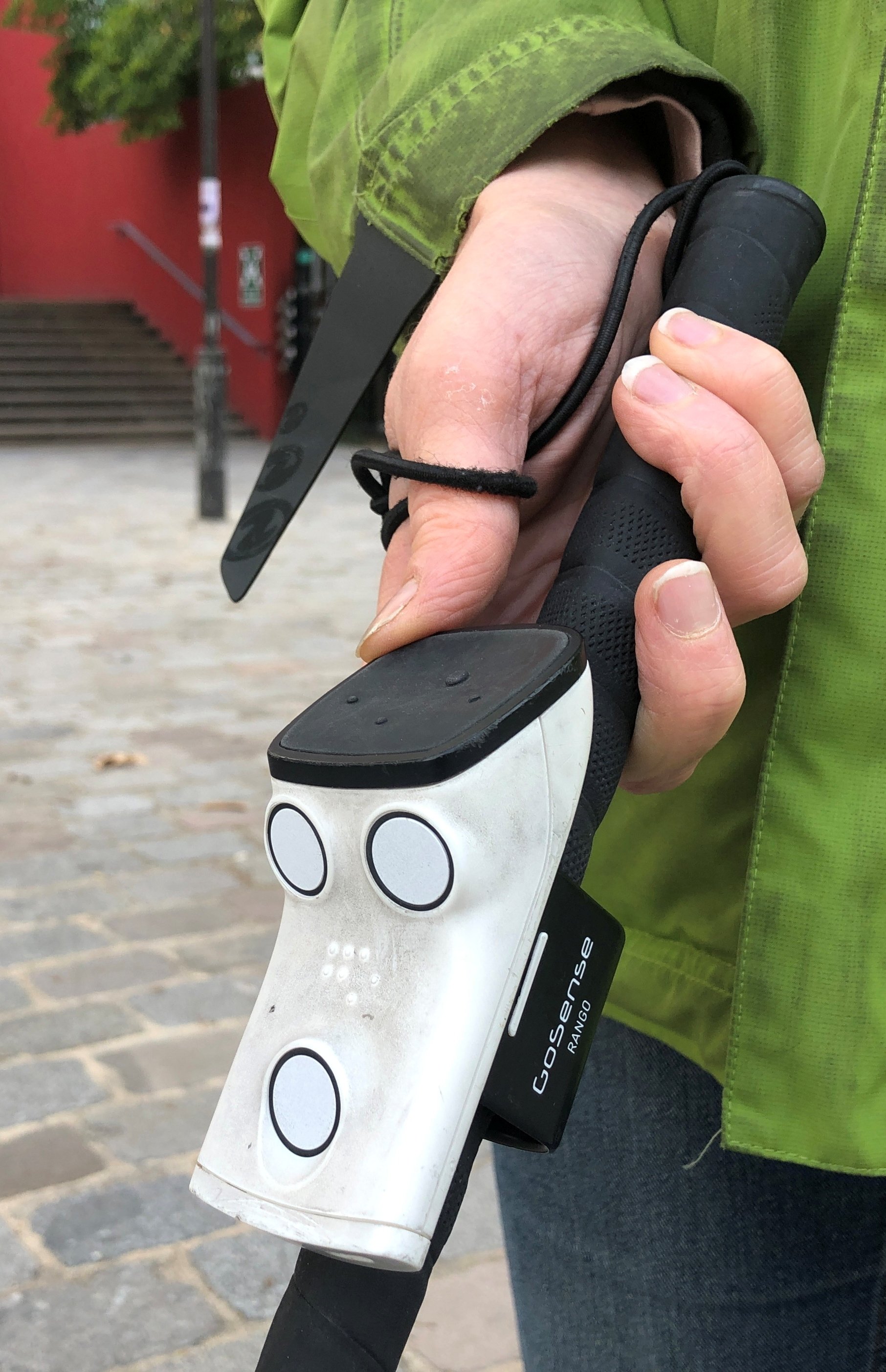Discover the Latest in Assistive Technology for the Blind
Discover the Latest in Assistive Technology for the Blind
Blog Article
Discover Cutting-edge Tools Made for the Visually Damaged
The advancement of cutting-edge tools for the visually impaired represents a significant development in accessibility and independence. Technologies such as clever glasses with AI abilities and mobile applications developed to supply acoustic descriptions are improving daily experiences for users.
Smart Glasses for Navigating

Smart glasses made for navigation are transforming the means aesthetically impaired people engage with their environment. These innovative devices use a combination of cam modern technology, synthetic intelligence, and acoustic responses to provide real-time details concerning environments. By employing challenge discovery systems, wise glasses can notify individuals to prospective threats, allowing more secure movement in both acquainted and unfamiliar setups.
The integration of GPS innovation further improves navigating capacities, allowing individuals to obtain auditory directions as they relocate. This hands-free approach not only cultivates independence however also equips aesthetically impaired individuals to navigate metropolitan landscapes with boosted confidence. In addition, several wise glasses are furnished with functions that recognize landmarks and street indications, providing contextual info that improves the customer experience.
Moreover, the growth of these gadgets is continually advancing, with companies working to enhance the accuracy of item acknowledgment and increase the variety of navigational features. As clever glasses come to be more economical and accessible, they hold the potential to significantly transform everyday life for aesthetically impaired users. Inevitably, these ingenious devices represent an essential step toward inclusivity, offering boosted flexibility and a higher sense of autonomy for people browsing the world around them.

Mobile Apps for Daily Living
How can mobile applications boost the day-to-days live of visually damaged people? Mobile apps are revolutionizing the way visually impaired users browse their atmospheres, take care of daily tasks, and gain access to details. These applications give necessary assistance with different functionalities, promoting self-reliance and improving quality of life.
A number of innovative mobile apps are developed especially for daily living. For example, applications like Be My Eyes attach aesthetically damaged individuals with sighted volunteers using video calls, allowing them to receive real-time assistance with jobs such as checking out labels or navigating unfamiliar spaces. Seeing AI, established by Microsoft, uses synthetic intelligence to describe environments, read message, and recognize items, efficiently changing a smartphone right into a powerful device for everyday assistance.
Furthermore, navigating apps tailored for the aesthetically damaged, such as Aira and BlindSquare, offer audio-based instructions and ecological information, allowing individuals to traverse their environments securely and confidently. Past navigation and prompt help, mobile apps also support company and job management, with functions that aid users set tips, create order of business, and track consultations. In recap, mobile applications serve as crucial resources, equipping aesthetically damaged individuals to lead more independent and satisfying lives.
Wearable Technologies for Aid
Empowerment with technology is progressively evident in the realm of wearable tools designed to help aesthetically impaired people. These innovative devices integrate seamlessly right into daily life, boosting navigation and supplying essential comments to customers. Wise glasses outfitted with video cameras can identify faces and read message out loud, permitting individuals to connect even more confidently in social and expert settings.
One more remarkable advancement is the usage of haptic feedback systems in wearable gadgets. These systems utilize vibrations or various content other tactile signals to share information concerning the user's atmosphere, such as obstacles or changes in terrain, enhancing movement and safety. Wearable modern technologies likewise include wristbands that attach to smartphones, notifying users to alerts with subtle resonances, therefore enhancing connectivity without reliance on aesthetic signs.
As these innovations remain to progress, they are not only improving self-reliance for visually damaged individuals yet also promoting a greater feeling of inclusion in culture. By bridging the gap between difficulties faced in daily living and the capacity for freedom, wearable technologies act as critical devices in the quest for equal rights and empowerment for those with visual disabilities.
Audio Description Devices
Sound description devices play a vital duty in improving access for visually damaged people, providing them with the capacity to involve with visual media. Wearable technology for low vision. These devices offer narrated descriptions of vital visual aspects in movies, television shows, and live performances, making certain that users can completely understand the context and feelings conveyed with visuals
Sound description can be incorporated right into different platforms, including streaming solutions, cinema screenings, and live theater. Many popular streaming services now include audio description as an access attribute, permitting customers to select imp source it conveniently. Along with traditional media, specialized apps additionally exist, supplying audio descriptions for art exhibits, museums, and various other cultural events.
The effectiveness of audio description rests on the skill of the narrators, that must share visual information succinctly without interfering with the original sound. Developments in this field are likewise leading the means for even more customized experiences, where individuals can readjust the degree of information and pacing according to their preferences.
Braille Innovations and Tools
Braille innovations and tools have actually dramatically changed the way aesthetically damaged individuals interact with text and details. Modern fashion eyeglasses advancements have actually brought about the development of functional devices that boost literacy and independence amongst individuals. Notably, Braille show technologies have developed, permitting vibrant reading experiences. These gadgets convert digital message into Braille, enabling customers to access a huge range of details on tablets, computer systems, and smart devices.
Additionally, mobile Braille notetakers integrate conventional Braille input with modern capabilities, promoting note-taking, organizing, and document editing on the move. OCR devices for the blind. These small gadgets commonly include text-to-speech abilities, bridging the void in between Braille and acoustic details
In enhancement, ingenious Braille printers have actually emerged, permitting users to generate Braille labels, records, and academic materials effectively. This accessibility promotes better engagement in professional and educational environments, eventually advertising inclusivity.
Moreover, research into wise Braille modern technologies continues to expand. Devices that include artificial intelligence are being discovered to supply real-time navigation aid and contextual details, boosting the user experience in varied setups. Overall, these technologies reflect a commitment to equipping aesthetically impaired individuals with technology, guaranteeing they can conveniently gain access to and involve with the globe around them.

Final Thought
The advancement of ingenious devices for the aesthetically damaged dramatically improves freedom and top quality of life. Smart glasses, mobile applications, wearable technologies, audio description tools, and Braille advancements collectively equip people by providing crucial navigation support, environmental understanding, and enhanced analysis experiences. These innovations not just foster greater inclusion yet additionally advertise freedom in daily activities, eventually adding to an extra available and equitable society for visually impaired people. Continued advancement in this area holds guarantee for more enhancements.
As clever glasses become much more obtainable and budget friendly, they hold the possible to significantly transform daily life for aesthetically impaired users. Mobile applications are revolutionizing the method visually impaired customers navigate their settings, handle day-to-day jobs, and gain access to details. Applications like Be My Eyes connect visually impaired individuals with sighted volunteers using video phone calls, allowing them to get real-time help with jobs such as reviewing tags or browsing unfamiliar spaces.In addition, navigation apps tailored for the aesthetically damaged, such as Aira and BlindSquare, supply audio-based directions and ecological details, enabling individuals to traverse their surroundings safely and with confidence.The advancement of ingenious devices for the aesthetically damaged substantially enhances freedom and quality of life.
Report this page